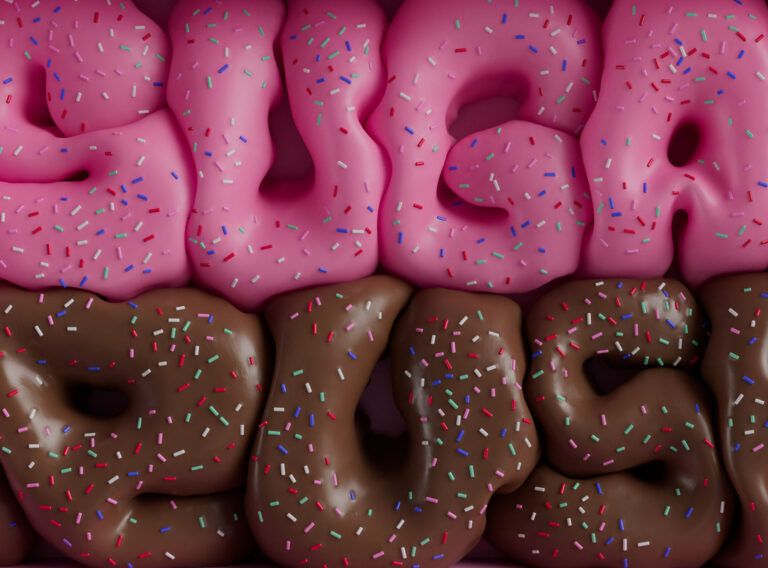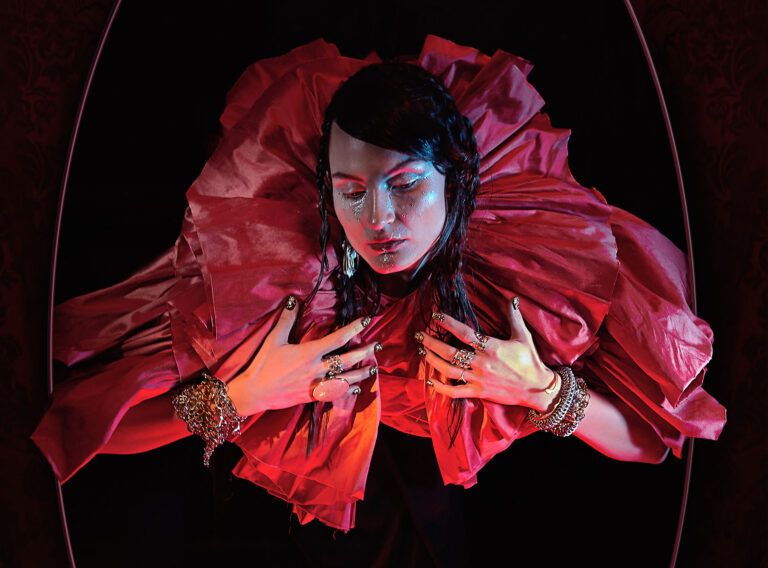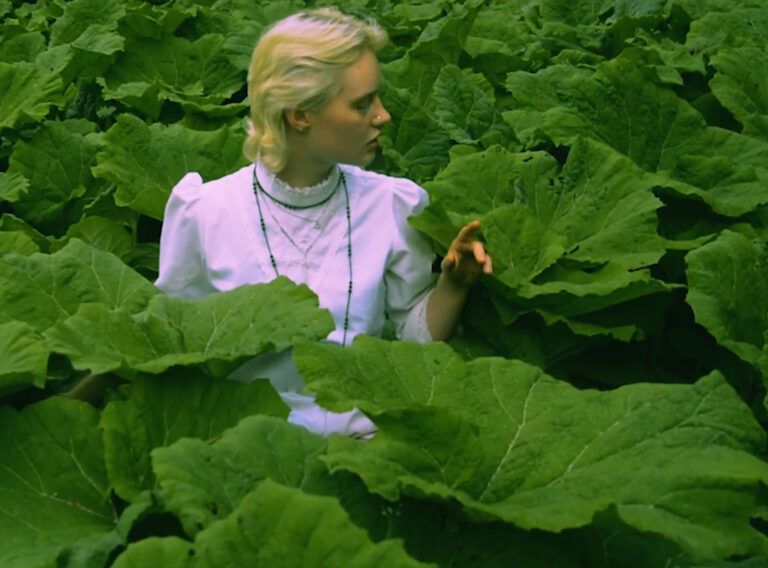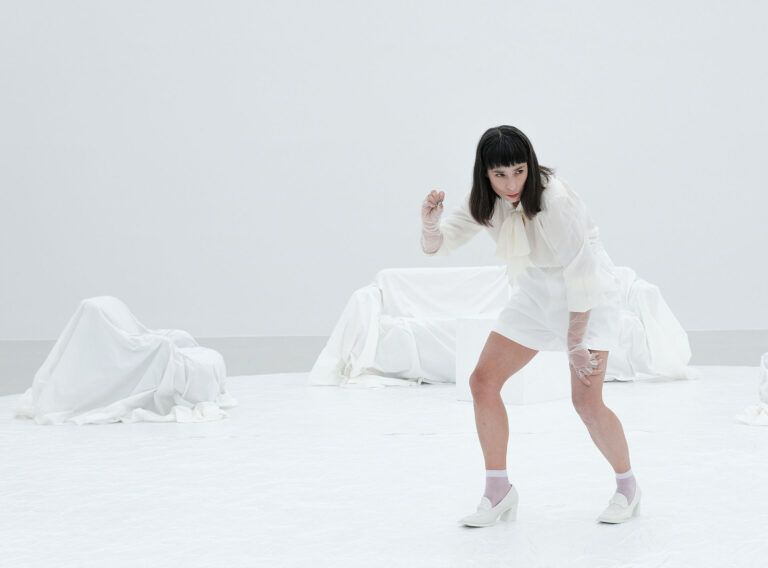Did you know that skin is our biggest organ? It certainly enjoys a lot of significance and attention in our society but mostly not for its amazing protective and temperature-regulating properties. The corporeal, the only thing we will truly own throughout our lives, has been made superficial. Also into a political and religious battlefield, governed by misguided attempts at self-righteous “morality”.
On the other hand, the antithesis to this could be found in the “toxic positivity” movement, surrounding bodies. This personal philosophy looks down upon every “Negative Nancy” not throwing a party for each individual body part and berates those who just want to exist without enthusiastic proclamations of self-love at every opportunity. Stretch marks are not “tiger stripes” or “battle scars”. Freckles are not “pixie dust”. Birthmarks are not “constellations”. Belly rolls are not “love cushions”. They just exist and it’s OK. It’s also OK, though, to have a positive mindset and an optimistic approach, to perceive all the alleged “imperfections” as something to be embraced and celebrated – and it’s OK if you don’t. You just have to be OK with you. At peace is enough. Accepting is enough. Comfortable is enough. You don’t have to be madly in love with your physical shell. Snuggle up in your body or challenge it from time to time; – again, up to you.
All the same, there are many reasons why humans sometimes seek to tweak their bodies or distort their digital image. Digital alterations to bodies will never cease to amaze, disgust, wow, creep and, frankly, arouse us. The byproduct of this can be a phenomenon called the “uncanny valley”, be it androids or digitally rendered humanoids. The uncanny valley is the region of negative emotional response towards robots that seem “almost” human. That’s why cute, talking maintenance robots, albeit modelled on humans, don’t provoke the same involuntary reaction as Sophia, the social humanoid robot developed by Hanson Robotics. Unlike her, we don’t suspect the walking vacuum to “trick” us into thinking it’s one of us and infiltrate our social circles.
Nonetheless, you can’t sufficiently cover the vast universe of topics that concern bodies in one introductory article – nor I’m going to attempt so. That’s the job of all the amazing artists we’ll introduce to you in the course of the next four months during HEAVENLY BODIES.
They’ll tackle “pictorial flesh” in paintings using bloody and meaty colours; the issues of the female visual image in photography, broadcast in the media and mass culture, inseparable from sexuality, increasingly aggressive in nature; Southeast Asia-inspired painted jungles of exotic flowers, sold bodies and cult statues.
An installation aiming to enclose you in a womb-like contraption to induce feelings of closeness and comfort; characters immersed in digital collages, forced to deal with unreal emotions; tackling one’s own conflicting physicality through paintings; 3D audiovisual universe where you can see and hear a human being and their inner bodily and mental fluctuations.
A cycle of painting as a contemporary take on cave and primitive art motives; seeking the thin line between design and fashion; the transition of materials such as silicone, resin, found objects and plastic into garments; jewellery and its place on the body as a display of wealth, social status and the wearer’s inner world; wearable emotions inspired by the story of Pandora; a liminal space where the boundaries between fashion, sculpture and body are alienated.
You will read essays and thoughts on you being someone else’s mind porn material and digital bodies in porn, the ephemerality of icons throughout the ages, poetry musing on the corporeal. The new music section will bring in-depth interviews and reviews.
And so much more.
To finish this off with a takeaway, let’s just go over these simple rules again.
1/ All bodies are deserving of respect.
2/ All bodies are deserving of love.
3/ Mind your damn business.
See? Simple. Study up, these will be covered in the Decent Human Being 101 exam next week.
Yours with love
The SWARM Mag Team
CREDITS
Text / Františka Blažková
Animace / Natália Peterková @peterkovaa

For your reading pleasure
Eco, Umberto, and Alastair McEwen (eds.). “History of Beauty.” New York: Random House, 2010.
Graham, Gordon. “Philosophy of the Arts: An Introduction to Aesthetics.” 3rd ed. London: Taylor and Francis, 2005.
Santayana, George. “The Sense of Beauty.” New York: Routledge, 2002.
FROMM, Erich. Člověk a psychoanalýza. Vyd. 1. Praha: Svoboda, 1967, 212, [5] s. Filosofie a současnost, 8.
LIPOVETSKY, Gilles. Éra prázdnoty: úvahy o současném individualismu. V čes. jaz. vyd. 3. Praha: Prostor, 2003, 311 s. Střed. ISBN 80-726-0085-0.
LIPOVETSKY, Gilles. Říše pomíjivosti: móda a její úděl v moderních společnostech. V českém jazyce vyd. 1. Praha: Prostor, 2002, 446 s. Střed, sv. 46. ISBN 80-726- 0063-X.
MARCUSE, Herbert. Jednorozměrný člověk: studie o ideologii rozvinuté industriální společnosti. Vyd. 1. Praha: Naše vojsko, 1991, 190 s. ISBN 80-206- 0075-2.
Professor Heather Widdow’s book is Perfect Me: Beauty as an Ethical Ideal /https://www.birmingham.ac.uk/research/quest/towards-a-better-society/beauty.aspx
An honest look at hybrid theories of pleasure/ Daniel Pallies, Philosophical Studies 178 (3):887-907 (2021)
Pleasure and the Good Life: Concerning the Nature, Varieties, and Plausibility of Hedonism.Fred Feldman – 2004 – Clarendon Press.
Slaves of the Passions.Mark Schroeder – 2009 – Analysis 69 (3):574-576.
Philosophies of Art and Beauty: Selected Readings in Aesthetics from Plato to Heidegger
Heavenly Bodies: Cult Treasures and Spectacular Saints from the Catacombs
Filozofie Těla – Klíč K Hlubšímu Chápání Vztahu Těla A Šatu – Helena Jarošová
Adler, Kathleen, and Marcia R. Pointon, eds. The Body Imaged: The Human Form and Visual Culture since the Renaissance. Cambridge, U.K., 1993.
Alexander, M. Darsie. Body Language. New York, 1999. Exhibition catalogue.
Apostolos-Cappadona, Diane. Dictionary of Women in Religious Art. New York, 1996.
Apostolos-Cappadona, Diane. “Humanity in the Arts.” In The Dictionary of the History of Ideas, 2d ed., edited by Maryanne Cline Horowitz. New York, 2004.
Apostolos-Cappadona, Diane. “The Nude.” In The Dictionary of the History of Ideas, 2d ed., edited by Maryanne Cline Horowitz. New York, 2004.
Arscott, Caroline, and Katie Scott, eds. Manifestations of Venus: Art and Sexuality. Manchester, U.K., 2000.
Barasch, Moshe. Imago Hominis: Studies in the Language of Art. Vienna, 1991.
Baring, Anne, and Jules Cashford. The Myth of the Goddess: Evolution of an Image. London, 1993.
Berger, John. Ways of Seeing. Baltimore, Md., 1972.
Bernal, Martin. Black Athena: The Afro-Asiatic Roots of Classical Civilisation. London, 1991.
Blundell, Sue. Women in Ancient Greece. London, 1995.
Bohm-Duchen, Monica. The Nude. London, 1992.
Bonito Oliva, Achille, and Aldo Busi. Disidentico: maschile, femminile, e oltre. Rome, 1998.
Bowie, Theodore, and Cornelia V. Christenson, eds. Studies in Erotic Art. New York, 1970.
Broude, Norma, and Mary D. Garrard, eds. Feminism and Art History: Questioning the Litany. New York, 1982.
Broude, Norma, and Mary D. Garrard, eds. Expandng Discourse: Feminism and Art History. New York, 1992.
Bynum, Caroline Walker. The Resurrection of the Body in Western Christianity. New York, 1995.
Capel, Anne K., and Glenn Markoe, eds. Mistress of the House, Mistress of Heaven: Women in Ancient Egypt. New York, 1996. Exhibition catalogue.
Carson, Fiona, and Claire Pajaczkowska, eds. Feminist Visual Culture. New York, 2001.
Chadwick, Whitney. Women, Art, and Society. New York, 1990.
Clark, Kenneth. The Nude: A Study in Ideal Form. 1956; reprint, Princeton, N.J., 1984.
Dijkstra, Bram. Idols of Perversity: Fantasies of Feminine Evil in Fin-de-Siècle Culture. New York, 1986.
Dixon, Annette. Women Who Ruled: Queens, Goddesses, and Amazons in Renaissance and Baroque Art. London, 2002.
Elder, George, ed. An Encyclopedia of Archetypal Symbolism, vol. 2, The Body. Boston, 1996.
Feher, Michel, Ramona Naddaff, and Nadia Tazi, eds. Fragments for a History of the Human Body. Cambridge, Mass., 1989.
Flynn, Tom. The Body in Sculpture. London, 1998.
Flynn, Tom. The Body in Three Dimensions. New York, 1998.
Freedberg, David. The Power of Images: Studies in the History and Theory of Response. Chicago, 1989.
Freschi, Renzo. La bellezza immortale: la figura umana nella scultura dall’India al Tibet. Milan, Italy, 1998.
Gowen, Rebecca, Gerald J. Larson, and Pratapaditya Pal, eds. In Her Image: The Great Goddess in Indian Asia and the Madonna in Christian Culture. Santa Barbara, Calif., 1980. Exhibition catalogue.
Hollander, Anne. Seeing Through Clothes. 1978; reprint, Berkeley, Calif., 1993.
Kelly, Joan. Women, History, and Theory: The Essays of Joan Kelly. Chicago, 1984.
Kemp, Martin, and Marina Wallace. Spectacular Bodies: The Art and Science of the Human Body from Leonardo to Now. London, 2000. Exhibition catalogue.
King, J. C. H. The Human Image. London, 2000. Exhibition catalogue.
Kristeva, Julia. Powers of Horror: An Essay on Abjection. New York, 1982.
Leeuw, Gerardus van der. Sacred and Profane Beauty: The Holy in Art. Translated by David E. Green; preface by Mircea Eliade; foreword by Diane Apostolos-Cappadona (reprint edition). 1963; reprint, New York, 2005.
Lucie-Smith, Edward. Sexuality in Western Art. New York, 1991.
Lucie-Smith, Edward. Adam: The Male Figure in Art. London, 1998.
Michell, George, Catherine Lampert, and Tristam Holland. In the Image of Man: The Indian Perception of the Universe through 2,000 Years of Painting and Sculpture. London, 1982. Exhibition catalogue.
Miles, Margaret R. Carnal Knowing: Female Nakedness and Religious Meaning in the Christian West. Boston, 1989.
Mullins, Edwin B. The Painted Witch: How Western Artists Have Viewed the Sexuality of Women. New York, 1985.
Nelson, Sarah M., and Myriam Rosen-Ayalon, eds. In Pursuit of Gender: Worldwide Archaeological Approaches. Walnut Creek, Calif., 2002.
Nochlin, Linda. Woman as Sex Object: Studies in Erotic Art: 1730–1970. New York, 1972.
Nochlin, Linda. The Body in Pieces: The Fragment as a Metaphor of Modernity. London, 1994.
Paglia, Camille. Sexual Personae: Art and Decadence from Nefertiti to Emily Dickinson. New York, 1990.
Perry, Gill. Gender and Art. New Haven, Conn., 1999.
Pointon, Marcia R. Naked Authority: The Body in Western Painting, 1830–1908. Cambridge, U.K., 1990.
Read, Herbert. The Art of Sculpture. New York, 1956.
Roberts, Helene E., ed. Encyclopedia of Comparative Iconography: Themes Depicted in Works of Art. 2 vols. Chicago, 1998.
Rudofsky, Bernard. The Unfashionable Human Body. Garden City, N.Y., 1971.
Russell, H. Diane, and Bernadine Ann Barnes. EVA/AVE: Woman in Renaissance and Baroque Prints. Washington, D.C., 1990. Exhibition catalogue.
Saunders, Gill. The Nude: A New Perspective. New York, 1989.
Sennett, Richard. Flesh and Stone: The Body and Civilisation in Western Civilisation. London, 1994.
Shilling, Chris. The Body and Social Theory. London, 1993.
Shilling, Chris, and Philip A. Mellor. Re-Forming the Body: Religion, Community, and Modernity. London, 1997.
Smith, Alison. The Victorian Nude: Sexuality, Morality, and Art. Manchester, U.K., 1996.
Smith, Alison, ed. Exposed: The Victorian Nude. London, 2002. Exhibition catalogue.
Steinberg, Leo. The Sexuality of Christ in Renaissance Art and in Modern Oblivion. Rev. ed. Chicago, 1996.
Suleiman, Susan Rubin, ed. The Female Body in Western Culture: Contemporary Perspectives. Cambridge, Mass., 1986.
Üster, Celâl, ed. “Nude in Art.” Special issue of P Art and Culture Magazine 9 (Spring 2003): 1–132.
Vernant, Jean-Pierre. Mortals and Immortals: Collected Essays. Edited by Froma Zeitlin. Princeton, N.J., 1991.
Walters, Margaret. The Male Nude: A New Perspective. New York, 1978.



